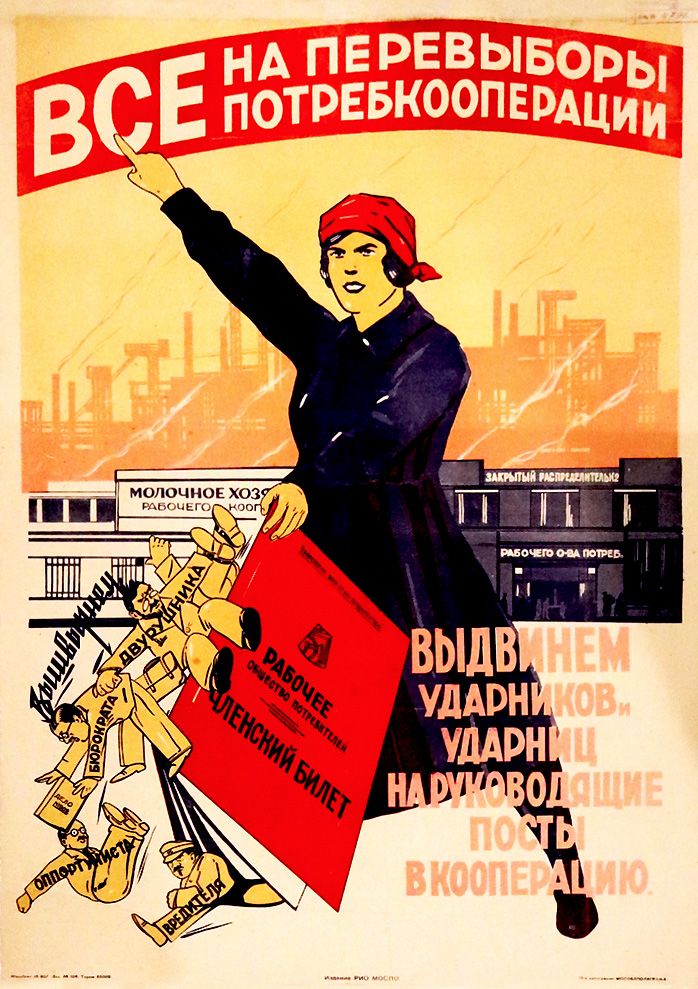
Everyone [to participate] in the new consumer-cooperative elections. We’re promoting [male] shock workers and [female] shock workers to leadership positions in the cooperatives.
Poster Number: PP 1020
Category: Industry
Poster Notes:
[On red book]: “Worker society of consumers” – “Membership card”
[On buildings]: “Milk products / Worker cooperative”, “Closed distribution [center] No. 2, Worker society of consumers”
Media Size: 32x23
Poster Type: Lithograph
Publishing Date: c.1926
Technical Information on Poster: Order No. 104
Print Run: 25,000
Glavlit Directory Number: 907 Mosoblit, Moscow regional section of Glavlit
Catalog Notes: PP 1020 Industry b
Artist: Artist Unknown — неизвестный художник
The artist's name on the poster is not indicated. By assigning Artist Unknown to a poster it also could mean the artist used a chop mark whereby no signature is seen thus rendering the artist's identity anonymous.
Read More About This Artist
Printer: Mosoblpoligraf (Moscow Regional Printers), Moscow — Мособполиграф (Московская областная полиграфская), Москва
Mosoblpoligraf was a regional, state-owned printing trust created in the mid-1920s during the period when the Soviet Union was consolidating its best and most productive printers. The 5th Lithography Workshop, 12th Lithography Workshop, 16th Lithography Workshop, and the 26th Lithography Workshop were all Moscow printers under the Mosoblpoligraf banner.
Read More About This Printer
Publisher: MSPO (Moscow Union of Consumer Societies) — МСПО (Московский Союз Потребительных Общества)
Moscow Union of Consumer Societies (Moskovskii Soiuz Potrebitel'nykh Obshchestva) was abbreviated as MSPO and it was formed in 1897. In 1917, the Soviets reorganized it under an association of unions and changed its name to the Central Union of Consumer Societies (Tsentrosoiuz). The new structure under Soviet control was built around territories consisting of a regional union (raisoiuz), a provincial union (gubsoiuz), and a central union (Tsentrosoiuz). Soviet Cooperatives sold their own goods and had distinctive brands ...
Read More About This Publisher